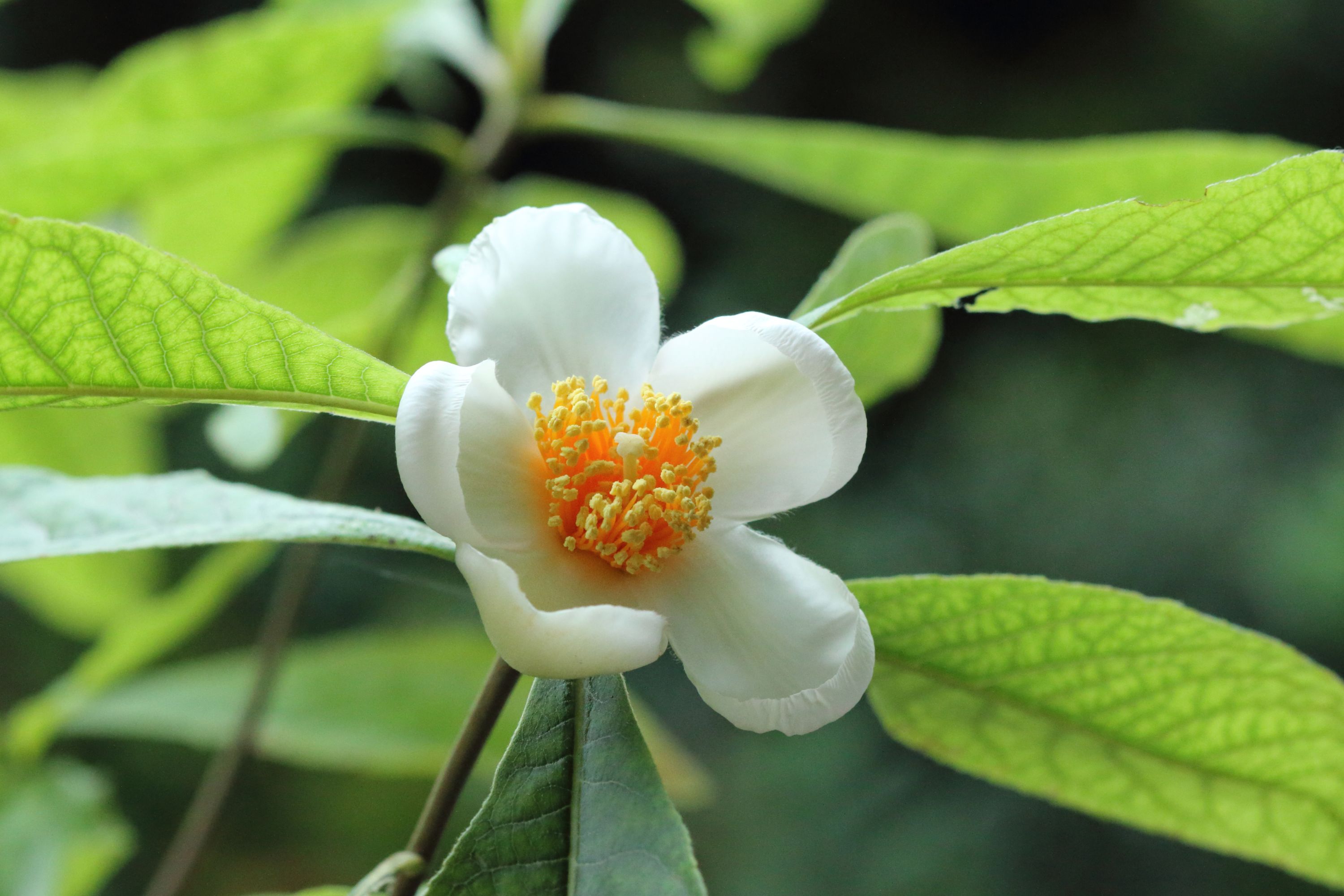Franklin tree
(Franklinia alatamaha)

Description
Franklinia is a monotypic genus in the tea family, Theaceae. The sole species in this genus is a flowering tree, Franklinia alatamaha, commonly called the Franklin tree, and native to the Altamaha River valley in Georgia in the southeastern United States. It has been extinct in the wild since the early 19th century, but survives as a cultivated ornamental tree. In the past, some botanists have included Franklinia within the related genus Gordonia. The southeastern North American species Gordonia lasianthus differs in having evergreen foliage, flowers with longer stems, winged seeds, and conical seed capsules. (Franklinia was often known as Gordonia pubescens until the middle of the 20th century.) Franklinia alatamaha is a small deciduous tree growing to 10 m (33 ft) tall, but commonly 4.5–7.5 m (15–25 ft). It is prized for its fragrant white flowers, similar to single white Camellia blossoms; the smell may remind some of orange blossoms or honeysuckle. The tree has a symmetrical, somewhat pyramidal shape, often with different individuals of the species forming almost identical crowns. It frequently suckers and can form several vertical trunks close to ground level. The bark is gray with vertical white striations and has a ridged texture. The alternate, obovate leaves are up to 6 in (15 cm) in length and turn a bright orange-red in the fall. Although difficult to transplant, once established, F. alatamaha can live a century or more. The seed capsules require 12–14 months to mature. Unlike almost all angiosperms, Franklinia alatamaha exhibits zygotic dormancy. It pollinates in late summer or early autumn, is then dormant over winter, and only sets fruit during the subsequent summer. Female gametophytes are mature prior to pollination, with double fertilization occurring soon after pollination. The zygote becomes dormant immediately after fertilization with delay of development until the following summer. Initial development of endosperm occurs for up to 3 months after fertilization but comes to a standstill at winter's onset. With onset of the following summer, embryogenesis begins and endosperm development restarts. This overwinter zygotic dormancy is extremely rare among temperate angiosperms. When ripe the pentavalved spherical capsules split above and below in a unique manner.
Taxonomic tree:







